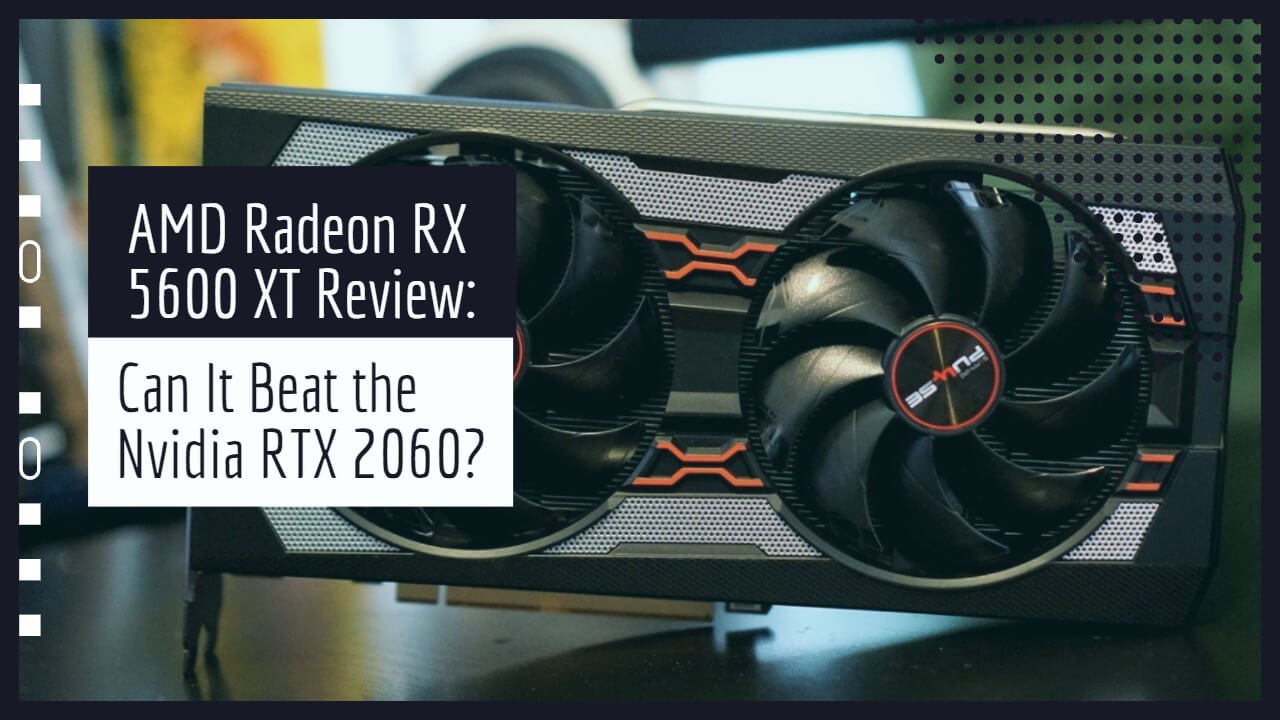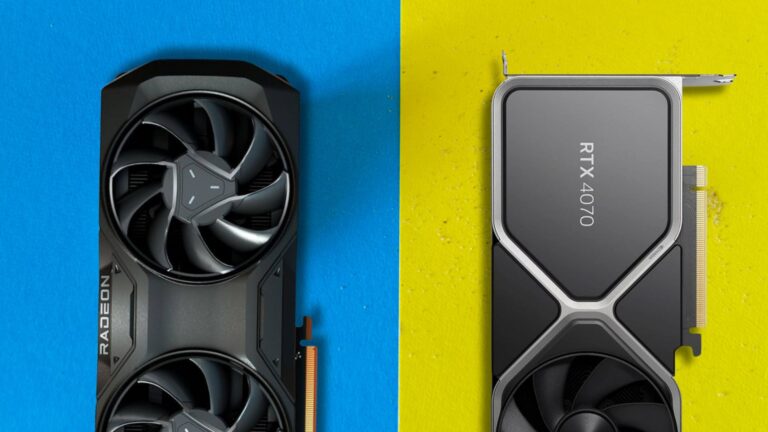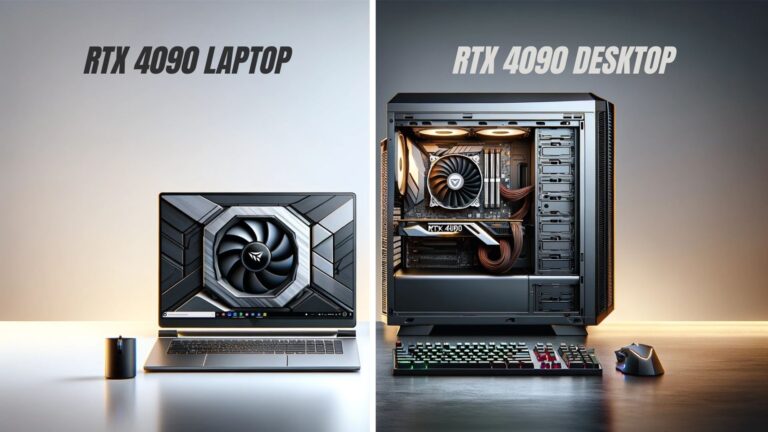AMD’s new Radeon RX 5600 XT graphics card is now available, but how does it compare against Nvidia’s RTX 2060?
 |
| AMD Radeon RX 5600 XT |
| BUY NOW |
| PROS |
| Generation-defining performance. Affordable. It doesn’t take too much power. |
| CONS |
| No ray tracing. Only 6GB of VRAM. |
| OUR VERDICT: If you are 100% certain on a $279 GPU though the 5600 XT does offer the best value here. If you can pay $30-$50 more then I would strongly encourage you to consider the RTX 2060, it’s faster than RX 5600 XT. |
SPECIFICATIONS:
| AMD RADEON RX 5600 XT | |
| Architecture | Navi |
| Date of introduction | January 2020 |
| Manufacturing Process | 7nm |
| Transistor Count | 10.3 Billion |
| Processing Cores | 2304 Stream Processors |
| Base / Boost Clock | 1375 / 1560 MHz |
| Video Memory | 6GB GDDR6 |
| Memory Interface & Bandwidth | 192-bit / 288GB per second |
| Board Power | 150 Watts |
| Power Connectors | One Eight-Pin |
| Launch Price | $279 |
OVERVIEW:
The RX 5600 XT was nearly dead on arrival because somehow AMD didn’t predict Nvidia’s most predictable move in the playbook, lowering the price of a competitive video card when AMD launches a new one.
Even EVGA RTX 2060 launched briefly at $280 then stabilized at $300, this created panic at AMD. The ensuing panic resulted in a last-minute VBIOS change that removed some of the 5600 XT restrictions, pushing it ever closer to cannibalizing the RX 5700 which AMD was trying to avoid from the beginning.
The company still has artificial overclocking limitations in place and they are easily bypassed. But it’s clear that it didn’t want to create a higher power consumption at RX 5600 XT. Ultimately, it’s good that AMD did issue that last-minute VBIOS change. We’re just worried that most of the launch day retail cards won’t have the new VBIOS applied.
It’s a good thing that AMD decided to increase its clocks and power consumption at launch for the RX 5600 XT. It’s a bit awkward for the company but the alternative would have been launching at its original state which you’ll see those numbers in our review too.
It would have competed with the GTX 1660 super but it would have been killed by the RTX 2060 which is now at a similar price.
The card was supposed to be 135-150 watts TDP on average or at least power budget on average through VBIOS, its price supposed to be around $280.
It looks good against the 1660 Ti. The 1660 Ti is a card that Nvidia should have killed and hopefully, NVIDIA has learned it’s lesson now. It also would perform the 1660 Super without competing directly in price. They’re in sort of different pricing categories, So AMD could stand out on its own.
VBIOS COMPARISON:
3DMark Firestrike Extreme Frame Hold

The original performance VBIOS averaged about 1611 megahertz relatively flatly throughout a firestrike extreme frame repeat render. Now that it dips down in the middle are reporting error in AMD’s API and are not actual frequency results.
The new performance VBIOS issued at the last minute by AMD ran at 1740 megahertz. So increase of about 130 megahertz from baseline. For reference, although it’s not shown here, the RX 5700 red dragon non XT card averaged about 1780 to 1800 megahertz. So it’s not that different from the 5600 XT post update.
The original silent VBIOS averaged roughly the same frequency as the original performance VBIOS just about 10 megahertz lower on average.
The updated silent VBIOS held around 1717-1730 megahertz average which is another dramatic uptick in frequency.
FurMark Power Limit Probe

It creates a furmer understanding of where the limitations lie because we hit the total maximum power consumption permissible by VBIOS.
The original performance VBIOS had a little bit of about 150 watts. With the original silently bios at around 134 watts.
There’s a reasonable difference here and enough of one to establish a gap in fan profiling as well. The new performance VBIOS pushes that to 160 to 165 watts with a new silently bios about the same as the old one around 135 watts.
3DMark FSE Hold Power Limit Probe

3Dmark is mostly useful to illustrate that games aren’t a great ways to see the total maximum power limit of VBIOS.
The RX 5600 XT original performance VBIOS ran at about 110 watts as monitored by the card’s own hardware but that’s not because it was limited to 110, it’s because the workload managed to max it out. This means that it will only boost the clock as high as it can get at 110 watts under the workload that 3DMark produces, as opposed to fur mark, where frequency runs lower but power runs higher. So that’s about 1611 megahertz in our original frequency plot with gaming workloads.
The new performance VBIOS has a power limit of about 140 watts or at least a power measurement of 140 watts in this particular benchmark. Either way it’s topping out at 140 in testing here and that’s where the extra 130 megahertz comes from.
The original silent VBIOS didn’t have a very different power limit and looks about the same, so we’re not sure if it even behaves much differently from a power management perspective.
The new silent VBIOS held at about 123-130 watts so it’s about 10-17 watts lower than the new performance VBIOS in this work look, that’s enough to establish an actual difference between them at least.
THERMAL BENCHMARKS:
FurMark Thermal Torture | GPU Auto Fan

The fans allowed to do whatever VBIOS wants them to do. The new silent VBIOS performs best at 80.2 degrees Celsius Junction and 74 degrees edge.
The original silent BIOS ran about the same and within variants. This all makes sense as the fan speed was roughly identical, power budget was about the same, and the frequency was about the same.
The new performance VBIOS and the old performance VBIOS run at about the same temperature as well but there was a fan RPM difference, so the new performance VBIOS runs louder or if you were to fix them to the same thing speed then the newer perforins VBIOS would run hotter.
FurMark Thermal Torture | GDDR6 Auto Fan

The only real difference here is that the higher fan RPM on the newer performance be by OS benefits the memory disproportionately to the GPU and the previous tests and so we see better results here for the newer VBIOS.
FurMark Thermal Torture Fan RPM

This chart will show the fan behavior for each of the previous auto speed tests.
The original performance fan RPM was required to run out about 860 to maintain its temperature target at fan speed that’s almost too low and is nearing 30 DBA at 20 inches.
The new performance VBIOS had a big uptick in power and frequency and so the fan ramps to about a thousand RPM to hold steady.
Noise isn’t too bad just be aware that there’s plenty of room to build your own fan curve if you’re working in a hotter ambient temperature or you just have a hotter case to work with. Overall, the card’s cooling solution is performing well.
The silent fan speeds those both sat at about 790-800 RPM and were unchanged with the VBIOS update.
FurMark Thermal Torture | GPU 40dBA @ 20°

This allows us to eliminate the fan speed changes that were incurred from the VBIOS change because we’d otherwise be unable to isolate how thermals are affected by the increased power budget alone. Locking fan speed is a necessity to do this properly.
The best performer is the set of silently VBIOS’S which are within test error and variance of each other.
The performance be VBIOS originally ran at about 68 degrees when the card was controlled or an edge temperature of about 60 degrees.
The newer update with the controlled fan speeds still and higher power consumption pushed to 72 degrees Celsius or 64 degrees edge and this is a like-for-like comparison.
GAME BENCHMARKS:
For testing, I’m using Intel i9-9900K which comes clocked at 5 gigahertz with 16GB of DDR4 3400 memory. I have compared this card with 11 other Graphics card. The MSI RX 5600 XT gaming X was used exclusively for all the 5600 XT testing in this review.
We have 6 games to look at and all have been tested at 1080p and 1440p using higher quality presets or settings. So let’s get into the results.
Shadow of the Tomb Raider
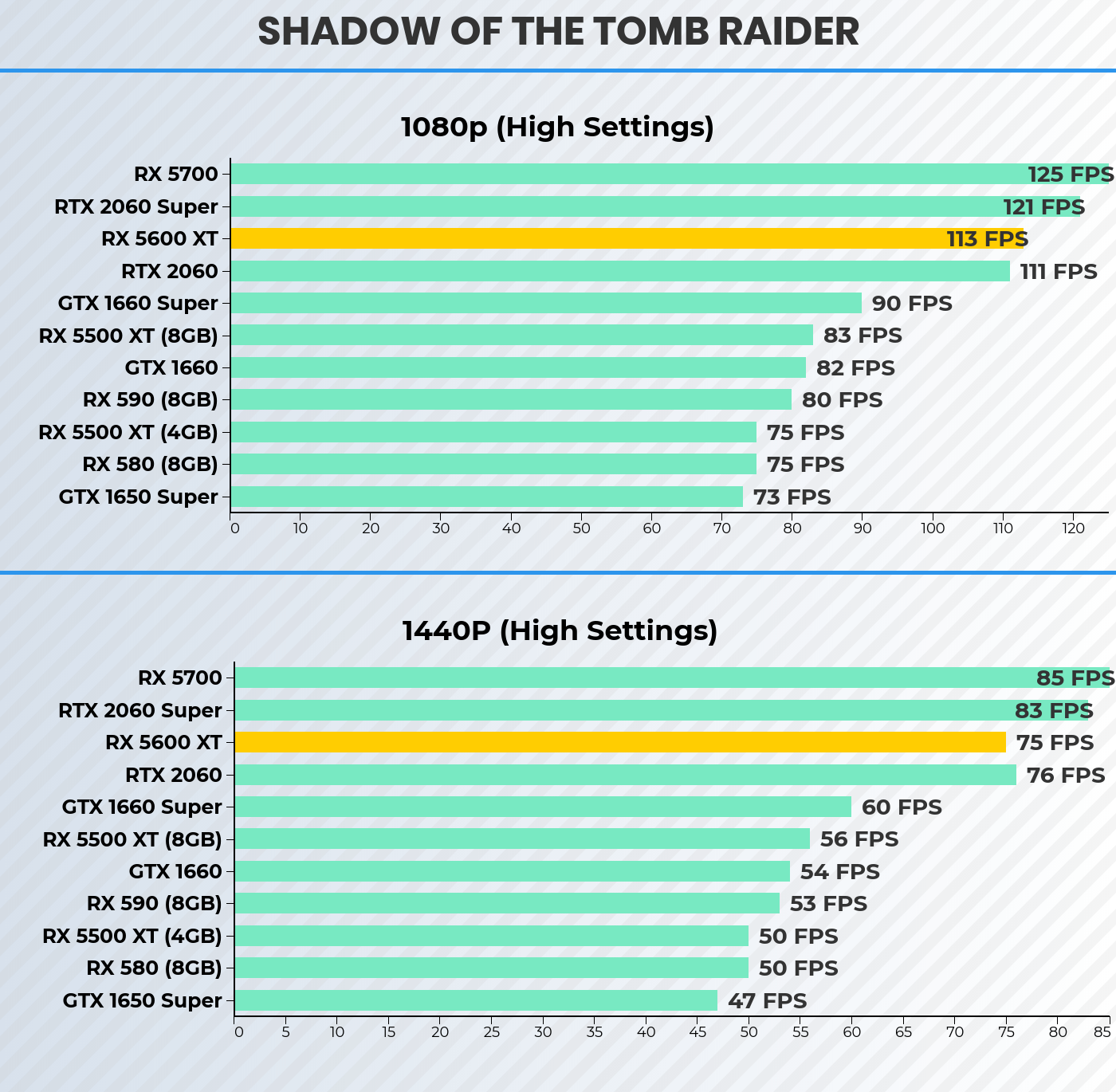
The MSI 5600 XT gaming X model is a few frames faster than the RTX 2060. In the title allows it to edge ahead of the RTX 2060 rather than trail it by an 8% margin.
It’s a similar story at 1440p, though this time the RTX 2060 manages to edge ahead of the 5600 XT by a single frame. So it’s pretty much a tie.
Assassin’s Creed Odyssey
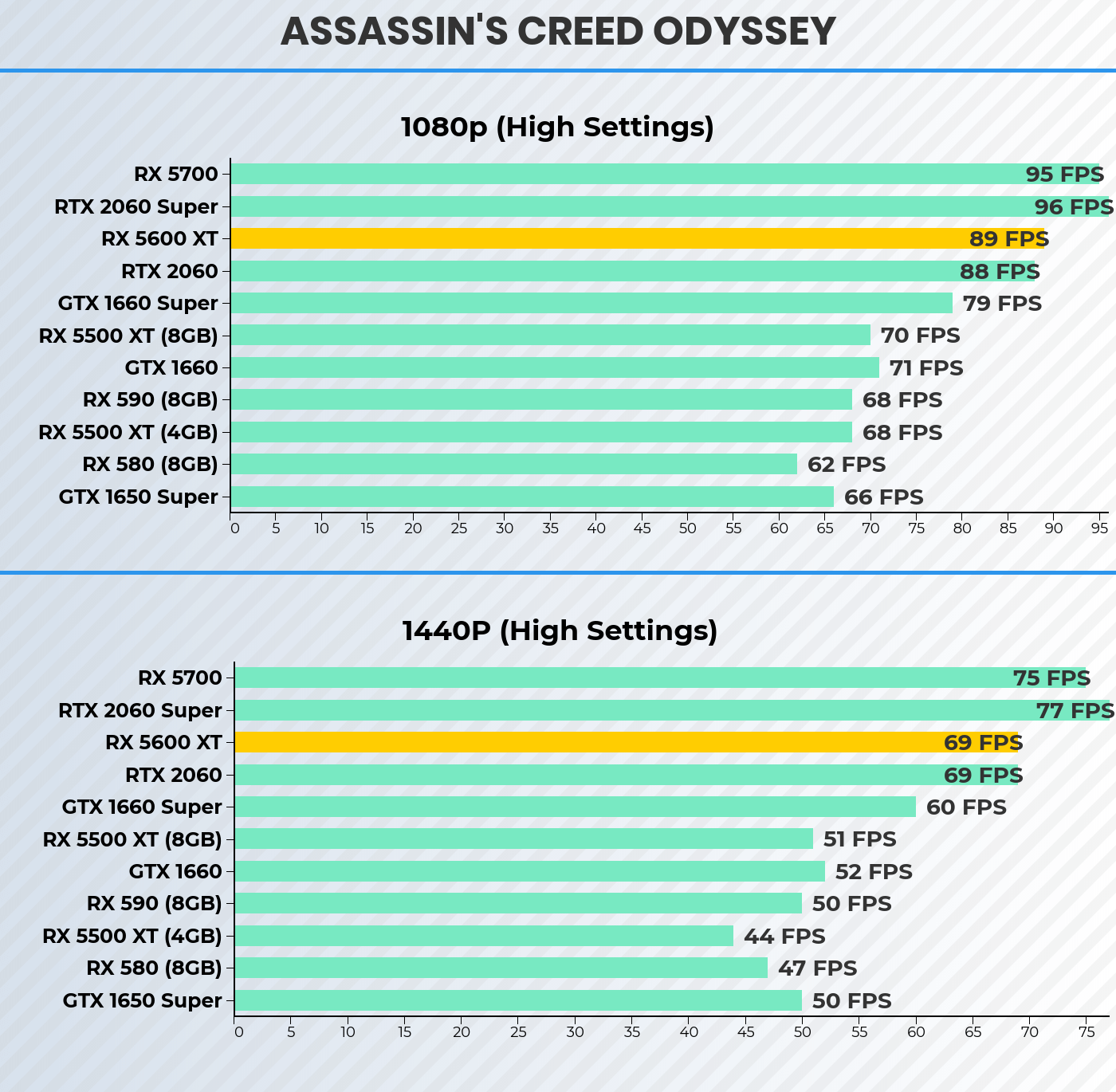
The 5600 XT again match the RTX 2060 after the update and that means it is just 6% slower than the RX 5700 and 7% slower than the 2060 super.
Identical performance between the 5600 XT and RTX 2060 can be seen at 1440p and this time the new $280 Navy GPU is just 8 percent slower than the RX 5700.
Red Dead Redemption 2
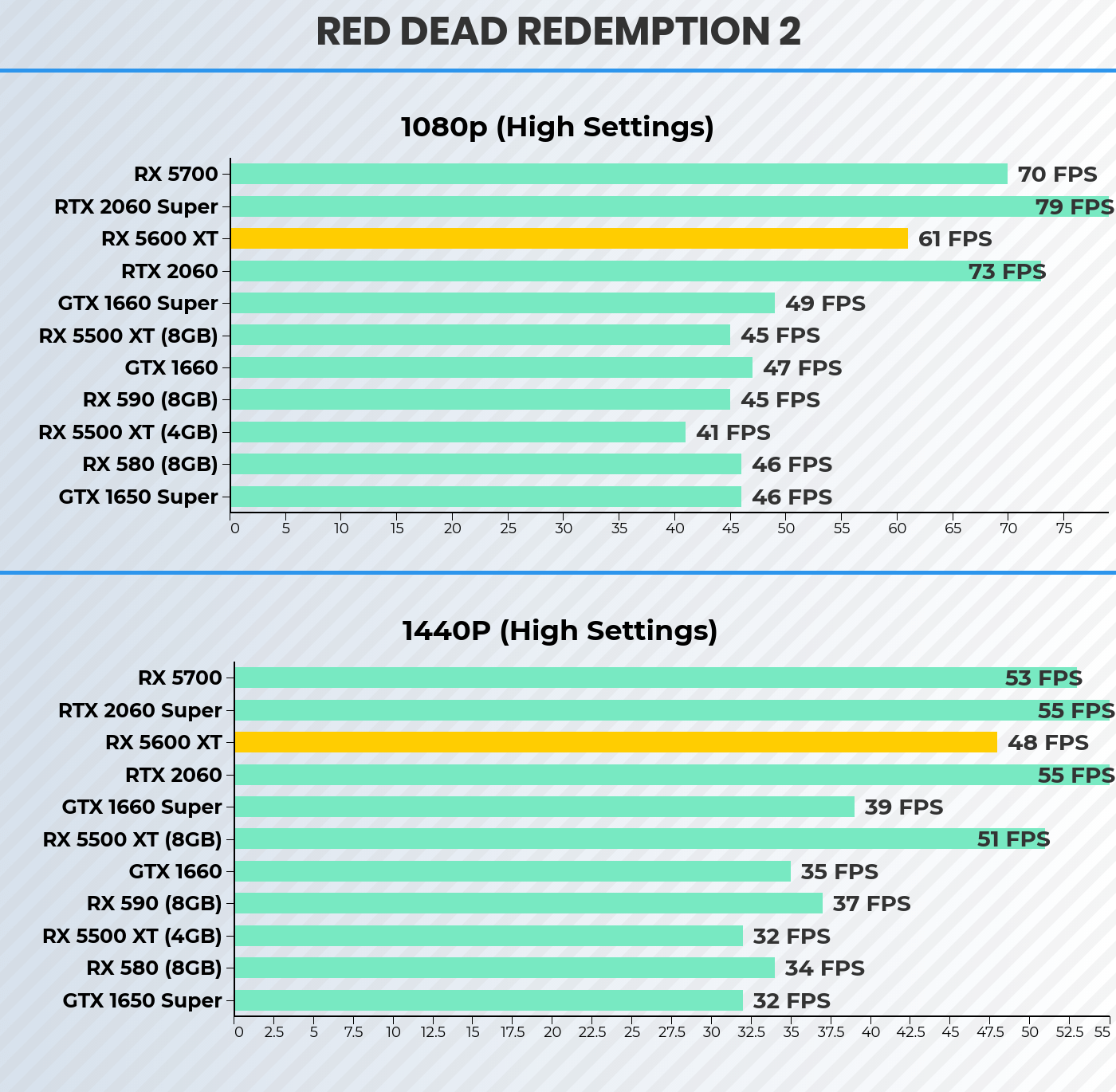
Nvidia strewing based GPUs have become very competitive a Red Dead Redemption 2. in fact, the RTX 2060 has now edged ahead of the RX 5700.
As a result of 5600 XT is quite a bit slower lagging behind by a 16 percent margin using the higher quality settings with D-Vulkan API and it’s a similar story at 1440p though this time the 5600 XT is 13% slower.
World Of Tanks
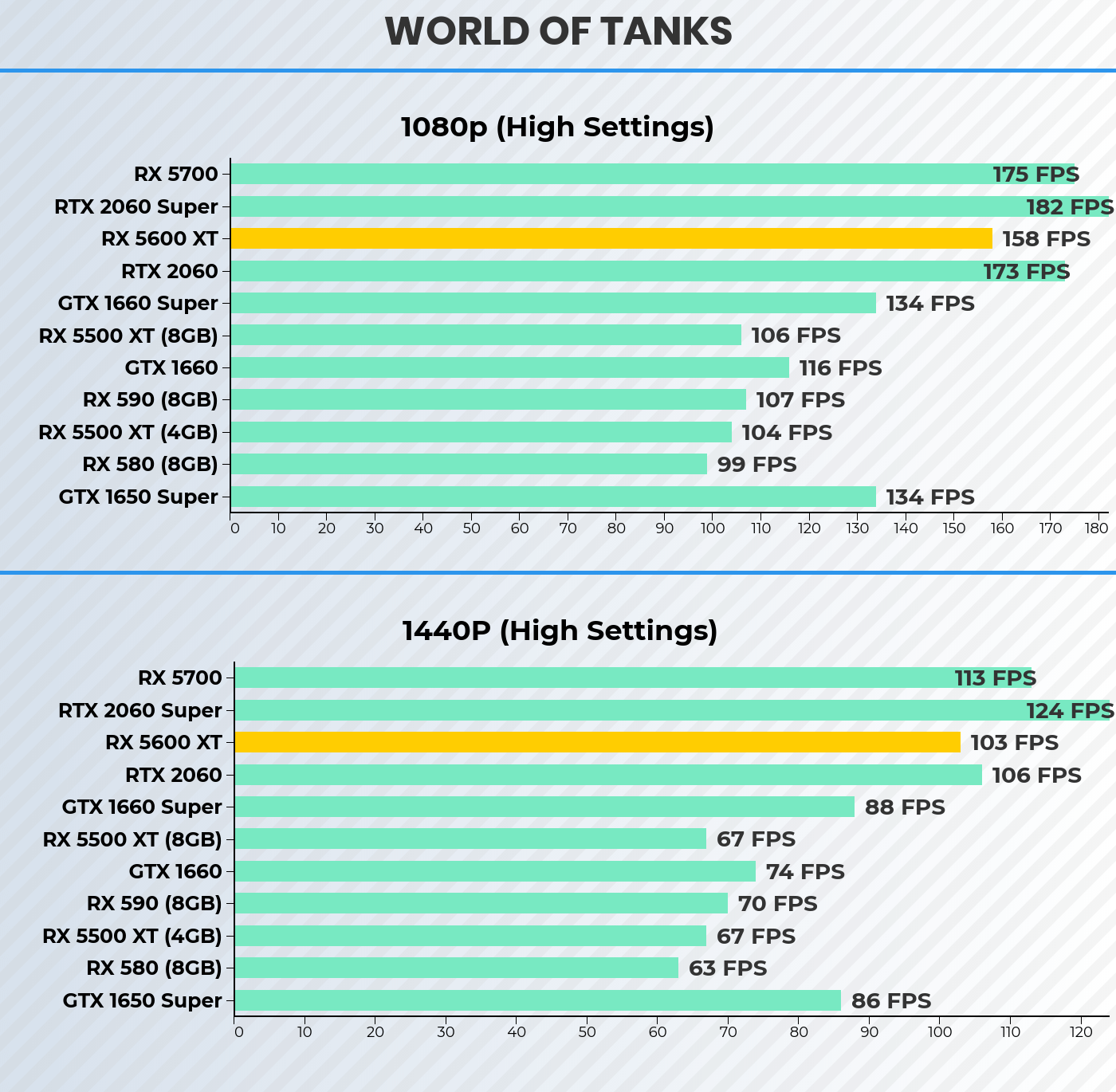
World of Tanks is another title where the cheering based GPUs and really NVIDIA GPUs in general do really well. The RTX 2060 for example that can be seen matching the RX 5700, this meant the OC version of the 5700 XT was 10% slower while the base model was around 17% slower.
The margins do close up a bit at 1440p, the 5600 XT you see was 6% slot in the RTX 2060 though base models will still be around 16% slower.
Far Cry New Dawn
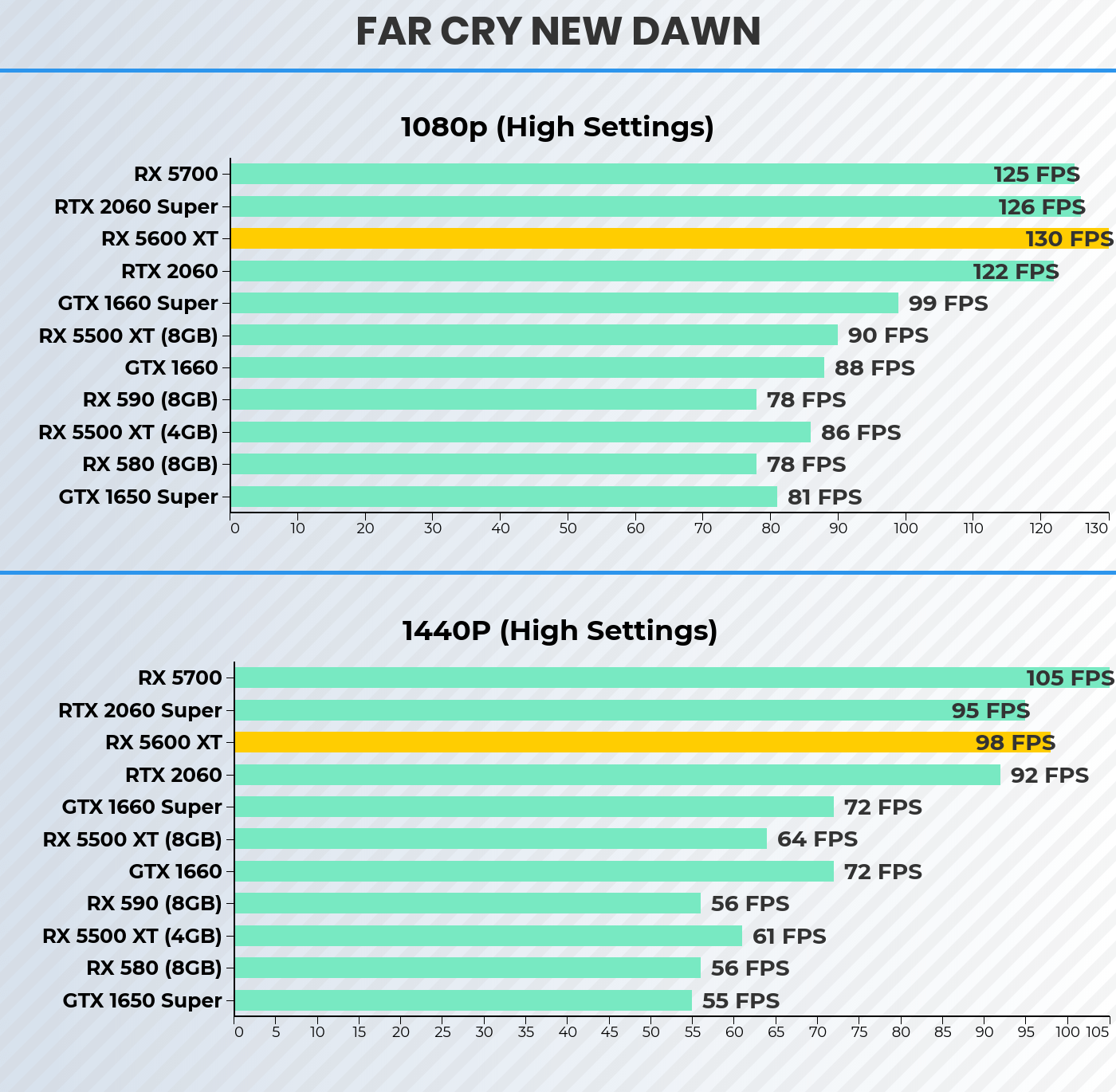
The results are quite interesting even the base spec 5600 XT is very close to not just the RTX 2060 but also the RX 5700.
Jumping up to 1440p does see some separation and now even the fact overclocked 5600 XT is slower than the RX 5700, they’re only by a 7% margin. It was also 7% faster in the RTX 2060 though the base spec is still a few frames slower.
BOTTOM LINE:
If you are 100% certain on a $279 GPU though the 5600 XT does offer the best value here. If you can pay $30-$50 more then I would strongly encourage you to consider the RTX 2060, it’s faster than RX 5600 XT.
